1. Both Heidi’s and Willow’s actions are fueled by their experiences with deep personal tragedy. Did you find them to be sympathetic characters? Are their offenses justified? Do you think they should be held responsible?
I found Willow to be sympathetic. Having gone through what she did – the loss of her parents at a young age, the adoption/separation from her sister, the abuse at the hands of her foster father… Yes, she was sympathetic. I ached for her. Does that make her offenses justified? Absolutely not. She kidnapped a child simply to punish the baby’s parents (who happen to be her sister’s adoptive parents) for having had the baby. There’s nothing that justifies that, and she absolutely should have been punished for that, probably more harshly than she was.
Heidi is trickier. Her descent into insanity seemed contrived to me. It wasn’t natural and was very abrupt feeling. I understand how and why she fell the way she did, but it didn’t feel like the author set it up enough in advance to make it flow with the rest of the story. Outside of being crazy (literally), I don’t know that Heidi had any offenses to be held responsible for.
2. Who do you think is most to blame for Willow’s abuse in her foster home: Joseph, the caseworker Amber Adler, or someone else? If you were in Willow’s shoes, would you have tried to do something differently to remedy the situation?
Definitely Joseph, the foster father. Ms. Amber Adler had no way of knowing that anything untoward was going on in that home, so she is 100% not to blame. Willow should have said something at some point so that someone – anyone – could have stopped the abuse. I’m not suggesting that a victim is ever to blamed for being abused, but she really should have said something during one of the caseworker’s visits. I like to think I’d have said or done something to remedy the situation if I were in Willow’s position, but being a quiet introvert, I can understand how she didn’t.
3. Who is the hero in Pretty Baby, and who is the victim? Does this change throughout the novel?
Oh, the hero and victim definitely change. In the beginning, Heidi is the clear hero: she works in a nonprofit whose main job is to help people, she adopts the cats mentioned on the book jacket (they barely make an appearance in the book), and she brings Willow and Ruby (the baby) into her home. Yes, she’s definitely a hero. By the end of the novel, she’s become a victim – to her own demons. Her past abortion (she was diagnosed with cervical cancer very early on in pregnancy; an abortion was the only chance she had to get the cancer treatment she needed) haunts her to the point of sending her to a mental institution. She kidnaps the baby she thought was Willow’s. She’s just a disaster by the end of the book.
Willow, on the other hand, starts out the victim. She’s a homeless teenager with a baby. As the novel progresses, we learn that she was victimized at the tender age of 8 by life when her parents were killed in a car accident. She was further victimized by her foster father for several years until she was able to escape that home. Heidi rescues her, but then victimizes her all over again by forcing her to leave Heidi’s home without Ruby, whom Heidi thought was Willow’s baby. As the book draws to a close, we learn that Willow’s true hero was Matthew (her foster brother), not Heidi at all. I don’t think Willow ever becomes a hero herself, but she does at least find solace in her situation and gets away from all of her abusers.
4. What do you think of Chris’s character? Is he a good husband? How does he contribute to the events that unfold in the novel? What could he have done to prevent Heidi’s downfall?
Chris is okay. Is he a good husband? Not really. Is he the worst husband ever? Definitely not. He contemplates cheating, but it says a great deal about his character that he doesn’t follow through. His participation in the events that become the novel’s climax are largely passive – he contributes simply by not having helped. I think he could have prevented Heidi’s meltdown by taking to heart what her doctor told her (which he recalled near the end of the book) about her needing psychiatric help, and not just physical care after the abortion. If he’d made sure she was taken care of mentally, she would have been able to process her feelings and might not have fallen apart the way she did.
5. Are Willow’s feelings for Matthew genuine, or a result of having no one else in her life to trust? Do you foresee a time in their lives when Willow and Matthew will reunite, or would Willow be better off making a fresh start?
There’s really no way to know whether Willow’s feelings for Matthew are real or not. I think she thinks they’re real, and that’s enough to say that yes, they are genuine. As for whether they’ll reunite, I don’t think so. In the closing chapter, Willow seems pretty stable in the group home, and as much as she loves Matthew, seeing him again would be bad for her. It could easily send her spiraling back into the blackness she was finally able to escape. Despite the fact that she wouldn’t have been able to leave without Matthew’s help, I still think she’s better off making a fresh start.
6. Are Zoe’s dramatics typical of a preteen girl, or is she herself a character on the brink of becoming unhinged? Does her own behavior contribute to Heidi’s undoing? Why or why not?
As a mom of boys, I found Zoe positively horrid. Are all 12-year-old girls like that? Because my 12-year-old boy certainly isn’t! I hope to shout her dramatics aren’t typical, but from what I’ve heard from moms of daughters, they probably are. They can be, anyway. I don’t think she’s “on the brink of becoming unhinged,” though. I think she’s just a brat. As for Zoe’s behavior contributing to Heidi’s downfall, I don’t think it did. I think her mere existence was a factor. Zoe was a constant reminder of all the children Heidi could never have. Instead of feeling blessed with the one she did have, Heidi focused more on those she didn’t have. So through no fault of her own, Zoe did cause (in part) her mother’s fall, unfortunately.
7. Heidi goes above and beyond to help Willow, a complete stranger. What would you have done in such a situation? How much are you willing to sacrifice to help someone you don’t know? How far is too far?
Our family has been in a similar situation – helping a homeless person. Not a teenager with a baby, but someone who needed a place to stay. We took this person in for one night (he was in after the kids went to bed and out before they woke up) and then provided food for him to last a couple of weeks. Four years later, this same person needed help again. He had a camper this time around, so we allowed him to camp in our driveway, hooked up to our power, for two weeks. So I can honestly say that we have helped in a similar way to Heidi. But to bring someone in to quite literally live with you for an unspecified amount of time, like Heidi did with Willow? No, I don’t think we would do that. There’s a fine line between helping and enabling, and it’s easy to cross. Most likely, we’d give the person some money or food rather than bringing them into our home long-term.
8. What do you think is the significance of the title Pretty Baby?
I wondered this very thing the whole time I was reading the novel. There are several things I can think of that might fit the title. First, Heidi and Chris’s aborted baby, Juliet (though they didn’t know the gender at the time of the abortion). She could have been the “pretty baby” because she is representative of the large family Heidi never got to have.
Or it could have been Ruby. She was quite literally the “pretty baby” in the novel, because she was the only real baby.
Finally, it could represent Heidi and Willow themselves. Each in their own way is still a baby due to their circumstances.
I’m not sure which of these reasons (or something else altogether) the author chose as the meaning behind the title.
~*~*~*~
Now we come to the part of the Book Club where we announce the next book we’ll be reading. Drumroll, please…
The Martian
by Andy Weir
I watched this movie recently and just loved it, so I’m super excited to Book Club about the book. Questions can be found in this Google Doc. We hope you’ll join us!
Blessings,

Did you blog about Pretty Baby this month? Link up with us! We’d appreciate a link back to our blogs somewhere in your post (easily done by copying the code below), and commenting on other clubbers would be awesome too!








 Youth with a Mission was founded in 1960 and has three major goals, all wrapped up in the base idea of sharing Jesus with the world. First, evangelism. Sharing Christ is the main thing we as Christians are commanded by God to do, and this is the first stated goal of YWAM. They have over 17,000 volunteers and staff all over the world proclaiming the good news of the Gospel to people in multiple countries. They pass out Bibles, and they follow up with their converts, making sure they (the converts) are able to find fellowship with other believers. Where none exists, they help the new Christians develop one. Second, training. The theory of multiplication rather than addition is a real thing, and YWAM understands that new Christians need to be trained in order to then reach even more people with the Gospel. Finally, Mercy Ministry. This is the arm of the company that takes emergency and physical aid to places where it’s needed most.
Youth with a Mission was founded in 1960 and has three major goals, all wrapped up in the base idea of sharing Jesus with the world. First, evangelism. Sharing Christ is the main thing we as Christians are commanded by God to do, and this is the first stated goal of YWAM. They have over 17,000 volunteers and staff all over the world proclaiming the good news of the Gospel to people in multiple countries. They pass out Bibles, and they follow up with their converts, making sure they (the converts) are able to find fellowship with other believers. Where none exists, they help the new Christians develop one. Second, training. The theory of multiplication rather than addition is a real thing, and YWAM understands that new Christians need to be trained in order to then reach even more people with the Gospel. Finally, Mercy Ministry. This is the arm of the company that takes emergency and physical aid to places where it’s needed most.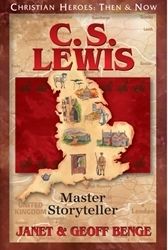 This biography, penned by Janet and Geoff Benge, tells the story of The Chronicles of Narnia and Mere Christianity author C.S. Lewis starting with an exchange with his nanny when he was six years old and going all the way through his death in 1963. We learn in the very first sentence that he preferred to be called Jack, and this is how he’s referred to throughout the entire book. The biography is told from the third person omniscient point of view, meaning that we don’t see things only from “Jack’s” perspective. Events are described from one looking at his life as an outsider rather than a participant. This gave the biography a very rich background upon which to weave the story of C.S. Lewis, who had a very fascinating life.
This biography, penned by Janet and Geoff Benge, tells the story of The Chronicles of Narnia and Mere Christianity author C.S. Lewis starting with an exchange with his nanny when he was six years old and going all the way through his death in 1963. We learn in the very first sentence that he preferred to be called Jack, and this is how he’s referred to throughout the entire book. The biography is told from the third person omniscient point of view, meaning that we don’t see things only from “Jack’s” perspective. Events are described from one looking at his life as an outsider rather than a participant. This gave the biography a very rich background upon which to weave the story of C.S. Lewis, who had a very fascinating life.
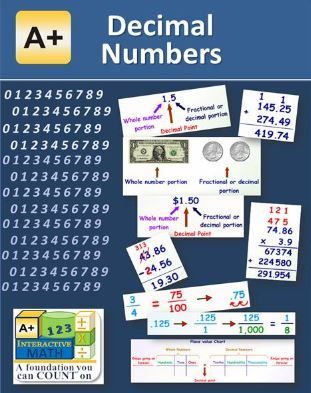
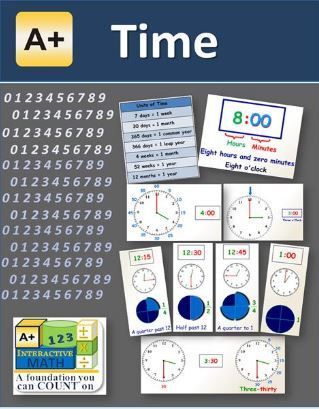

 I received these videos as downloadable files (currently on sale for $19.95; regular price $21.95), and printable worksheets were included. My laptop doesn’t have a whole lot of memory, and it’s not really conducive for us to use Will’s computer for school stuff, so I had to come up with a way that would work for us to use a downloadable product. Here’s what I ended up doing: First, I downloaded the videos and worksheets to Will’s computer. Then I uploaded them to my Dropbox account. (I did not share them with anyone but myself. This method was simply a workaround for a low-memory computer that couldn’t handle the downloaded videos.) This allowed us to stream the videos, which was perfect for us. The download files are quite large (two 30-minute videos, after all), so if you don’t have access to good (read: huge – preferably unlimited – bandwidth/upload/download speeds . . . I’m not entirely sure what the right terminology here is) internet, then the downloads probably aren’t the best choice for you. Never fear, though; Times Tales is also available in DVD format for $24.95. The downloads and DVDs are identical in content.
I received these videos as downloadable files (currently on sale for $19.95; regular price $21.95), and printable worksheets were included. My laptop doesn’t have a whole lot of memory, and it’s not really conducive for us to use Will’s computer for school stuff, so I had to come up with a way that would work for us to use a downloadable product. Here’s what I ended up doing: First, I downloaded the videos and worksheets to Will’s computer. Then I uploaded them to my Dropbox account. (I did not share them with anyone but myself. This method was simply a workaround for a low-memory computer that couldn’t handle the downloaded videos.) This allowed us to stream the videos, which was perfect for us. The download files are quite large (two 30-minute videos, after all), so if you don’t have access to good (read: huge – preferably unlimited – bandwidth/upload/download speeds . . . I’m not entirely sure what the right terminology here is) internet, then the downloads probably aren’t the best choice for you. Never fear, though; Times Tales is also available in DVD format for $24.95. The downloads and DVDs are identical in content.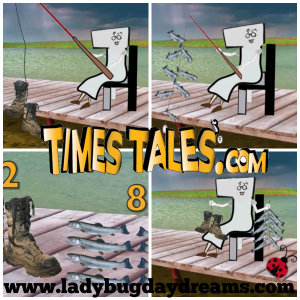

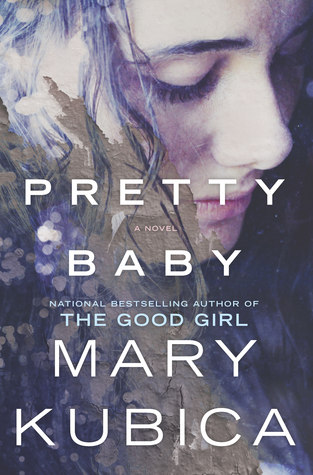

 Loading InLinkz ...
Loading InLinkz ...